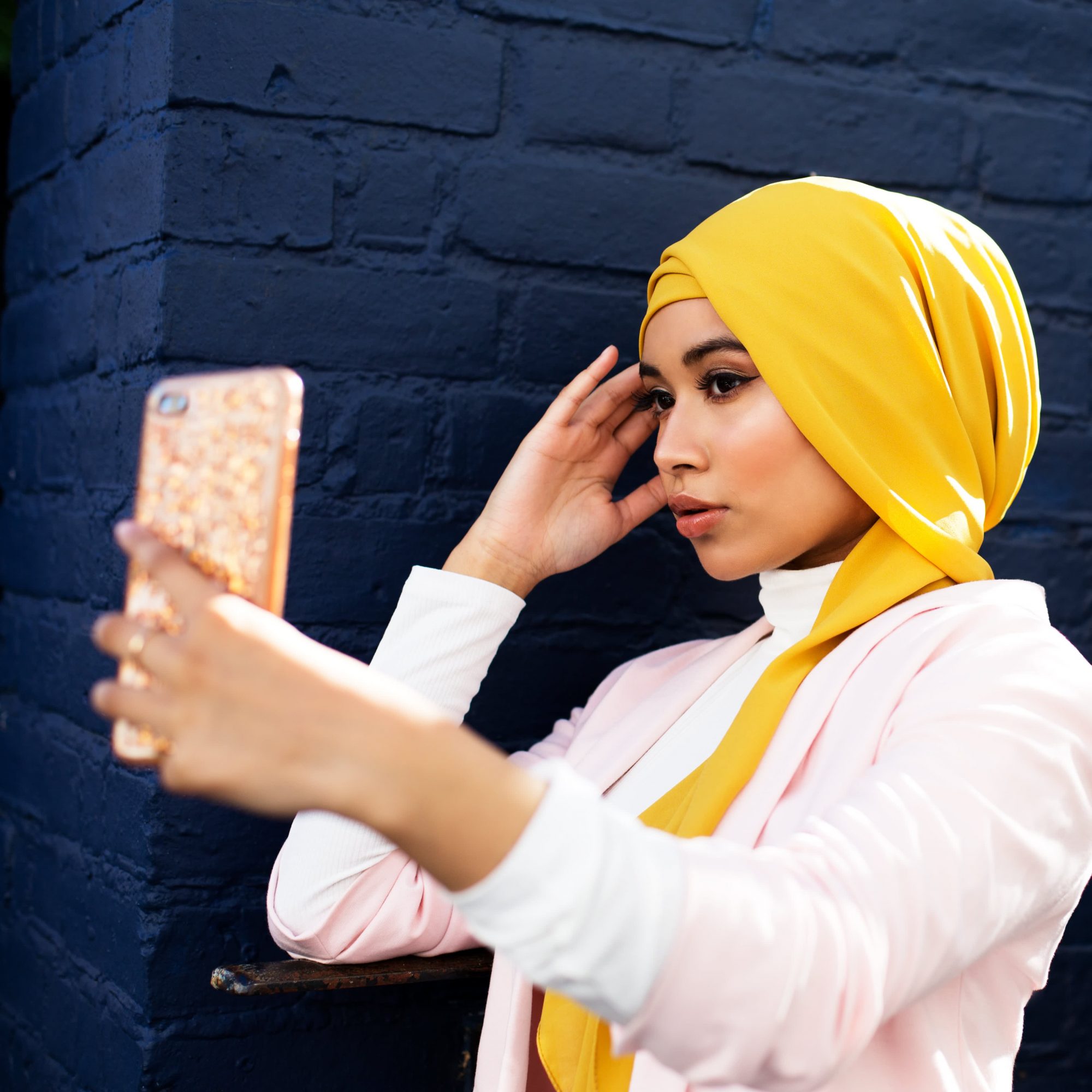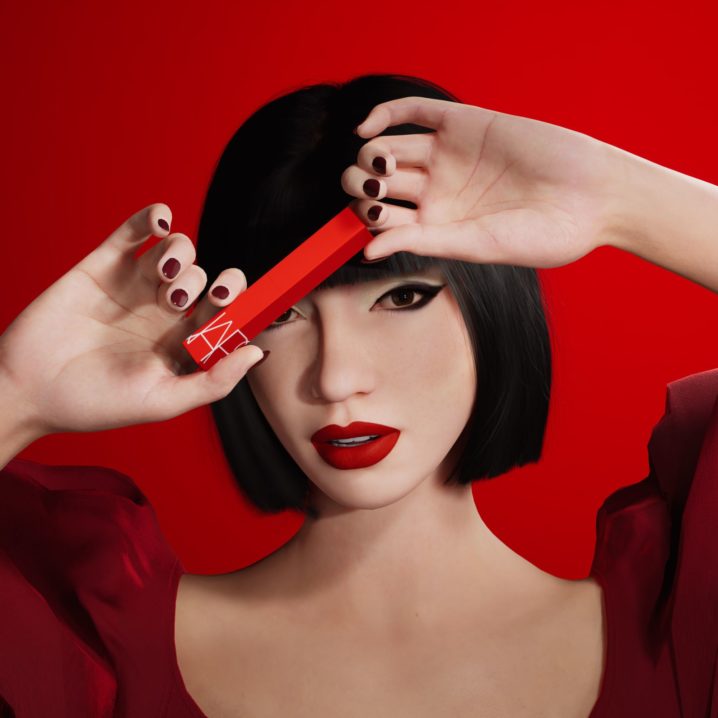
- POPSUGAR Australia
- Beauty
- Video Killed the Radio Star, Will Digital Influencers Kill Your Faves?
Video Killed the Radio Star, Will Digital Influencers Kill Your Faves?

In 2023, social media influencers are deciding on the products in your bathroom, the groceries in your shopping cart, the fitness classes you’re enrolling in. They’re helping you ask for a raise, delivering health advice, and keeping you entertained. They’re also performing hours of emotional labour daily (yes, the beauty influencer you’re DMing for a complete skincare routine has 120 identical DMs to respond to tonight).
We may scoff at them frequently, but as we near 2023, our parasocial relationships with influencers have only intensified, as have our emerging relationships with their digital counterparts, who are receiving three times the engagement of their human peers. The question is, will our relationship with digital influencers outstrip our love of IRL babes like Martha Kalifatidis?
How Thirsty Are We for Digital Influencers?

Turns out? We’re pretty thirsty.
Older zoomers are driving engagement with digital influencers, having taken to gamified Web3 environments like millennials took to Tamagotchis. According to Vogue Business, more than half of Gen Z plan to get fashion inspiration from avatars in 2023.
Celebrities are capitalising on this, as are brands. Paris Hilton has announced she wants to be “queen of the metaverse”. Snoop Dog wants to be the first “major [recording artist]” in the upsidedown. Meanwhile, Prince Harry and Meghan Markle are shopping for metaverse real estate, in a tireless bid to move to another planet and finally escape their relatives.
Meanwhile, there’s an explosive virtual idol industry in China that’s set to reach 1.5 billion yuan by 2023, with fan demand for digital idols actually leading to serious burnout for virtual influencers.
We could argue that the appetite for Web3 is still niche. That it’s mostly chronically online young people, celebrities clinging to relevance, or money hungry business entities. But as the recent and explosive success of Lensa tells us that’s not the case. Now, anyone with access to a smartphone phone — from your housemates to your Gen X aunt — can pay $3.99 (and their privacy rights) to marvel at their problematic-but-hot virtual reality avatar. And they have.
Meet the Beauty Influencers Who Don’t Exist IRL
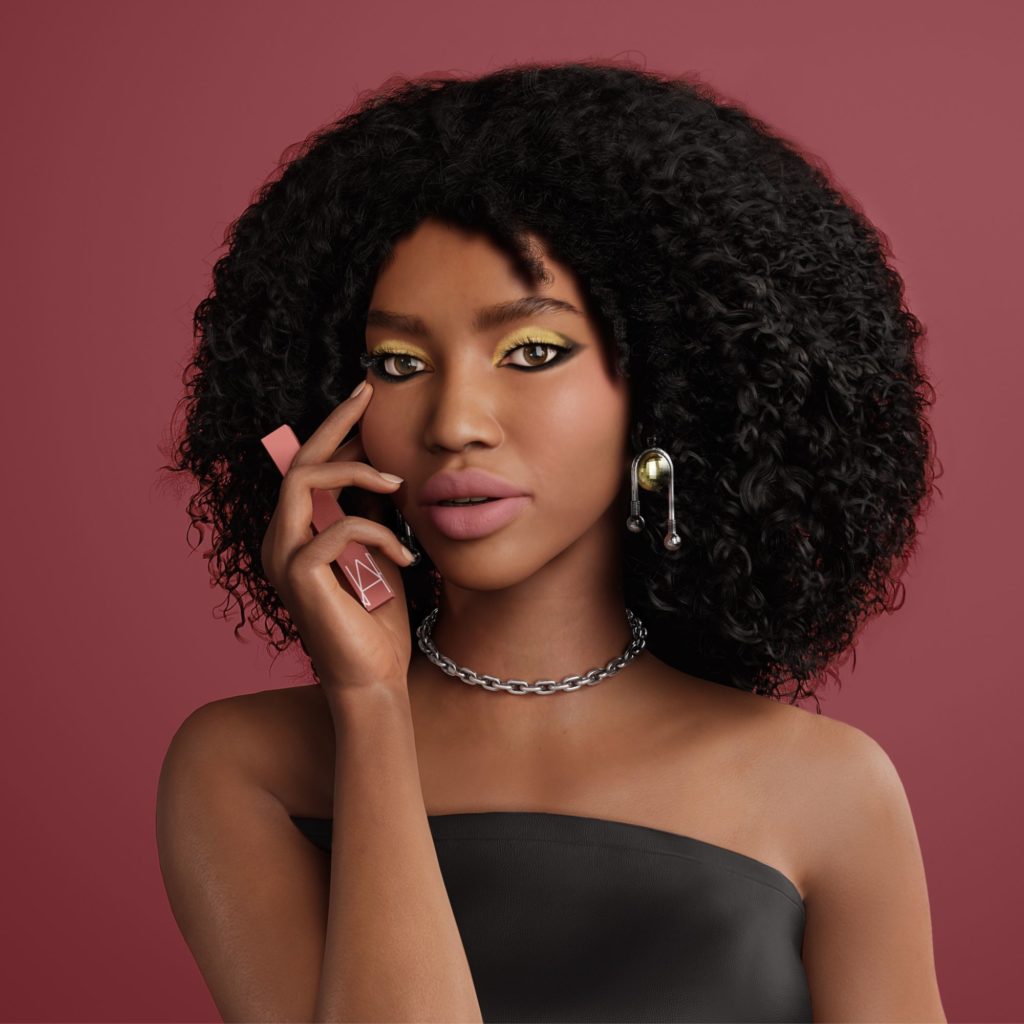
Brands are understandably keen to cater to our appetite for the virtual, particularly in fashion and beauty. NARS was founded in 1994 by legendary MUA Francois Nars, and in 2023 is one of the best-selling cosmetics brands at Australian luxury retailer MECCA.
NARS products are so deeply embedded in the beauty and fashion industry lexicon that, along with MAC Cosmetics, their foundation shade range is regularly used as a descriptor for skin tone by professional makeup artists. If you find the idea of receiving beauty advice from a virtual influencer dehumanising, just wait until you realise the makeup artist you booked for your wedding refers to you as a “NARS Stromboli”.
Dina Fierro, the Vice President of Global Digital Innovation and Strategy at NARS, is in the middle of launching the brand’s first digital ambassadors when I jump on a Zoom with her. Chelsea, Sissi, and Maxine are “Power Players” — anthropomorphised avatars of classic NARS shades found in the recently released “Powermatte Lipstick” range. They’re creatives with future-facing roles: Sissi is an emerging fashion designer based in Shanghai, Chelsea is a digital artist based in London, and Maxine is an underground DJ based in New York City. With flawless canary yellow cut creases, winged liner, and crisp red lips, they’re a diverse bunch, with beauty looks designed by NARS Global Artistic Director Lena Koro and outfits curated by Patti Wilson, Editor at Large at Vogue Italia and Dazed.
These girls are striking, but they’re not models. Aged between 21 and 32, they’re the kind of cool girls you’d be comfortable asking if your mascara was smudged while in the line for the bathroom on a night out. While we’ll have to wait for hologram technology for that to actually be a reality, Fierro plans they will be able to do just that in Web3 environments.
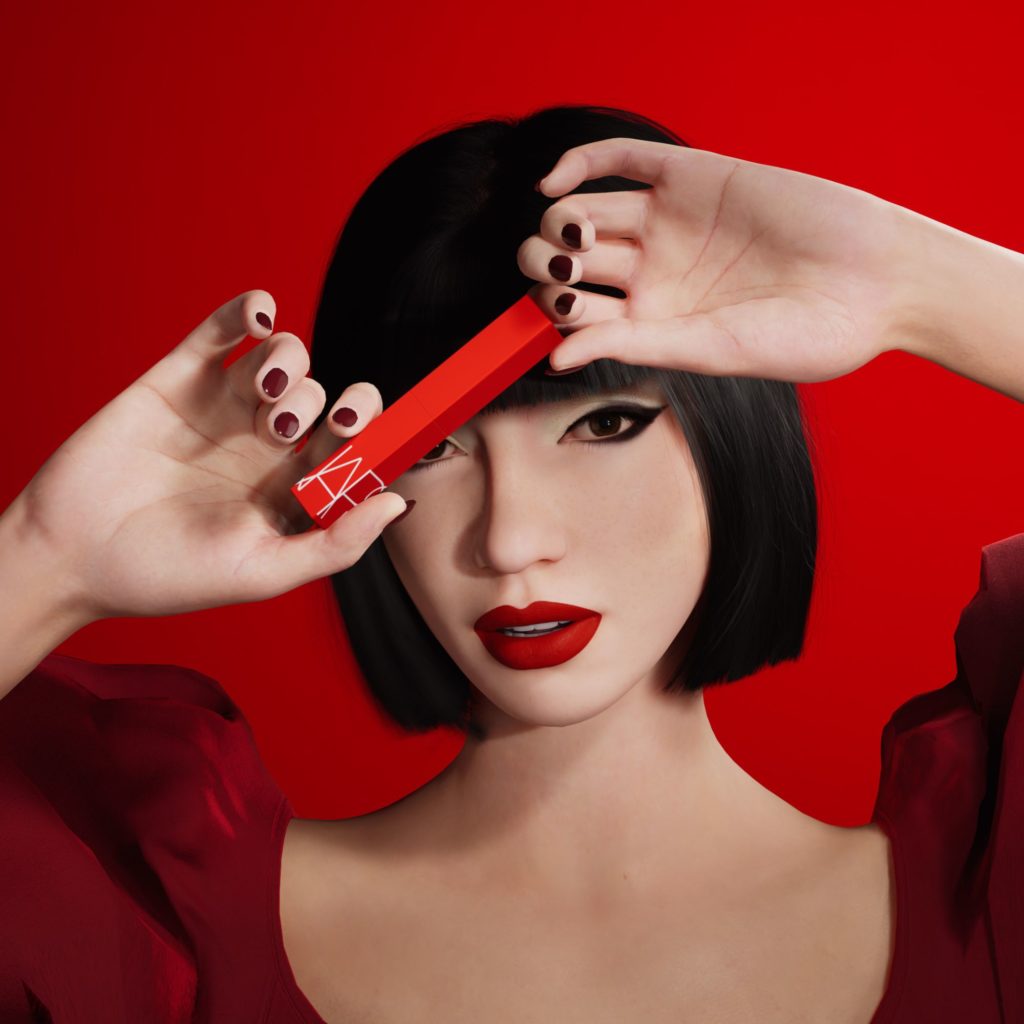
In conversation, Fierro is quick to clarify that neither she nor the company thinks “meta-humans” will replace human influencers. In fact, Fierro herself was arguably part of the first wave of influencers. An FIT graduate, she was part of the Web1 blogger wave that democratised the Fashion Week front row in the 2010s. If you think people are clasping their pearls about Emma Chamberlain on the Met Gala red carpet, you probably weren’t there for 13-year-old Tavi Gevinson front row at Dior. Having seen the evolution of online influence move from the Web1 blogosphere to Web2 Instagram and TikTok-dominated influencer mayhem, Fierro believes Chelsea, Sissi, and Maxi will act as guides for customers in what she refers to as a “speculative, but inevitable” metaverse.

In the luxury virtual influencer marketplace, Maxine, Chelsea, and Sissy are fairly unique. Where luxury fashion brands like Versace, Dior, Valentino, and Moschino have partnered with existing virtual influencers, the NARS Power Players are custom. The girls’ birth mother is Unreal Engine, a 3D rendering tool owned by Epic Games and named for the first game it was used on, a 1998 first-person shooter.
While NARS have sacrificed the benefits of buying into existing followers with this decision, the decision means they can infinitely customise their avatars to reflect their global and diverse consumer as technology evolves.
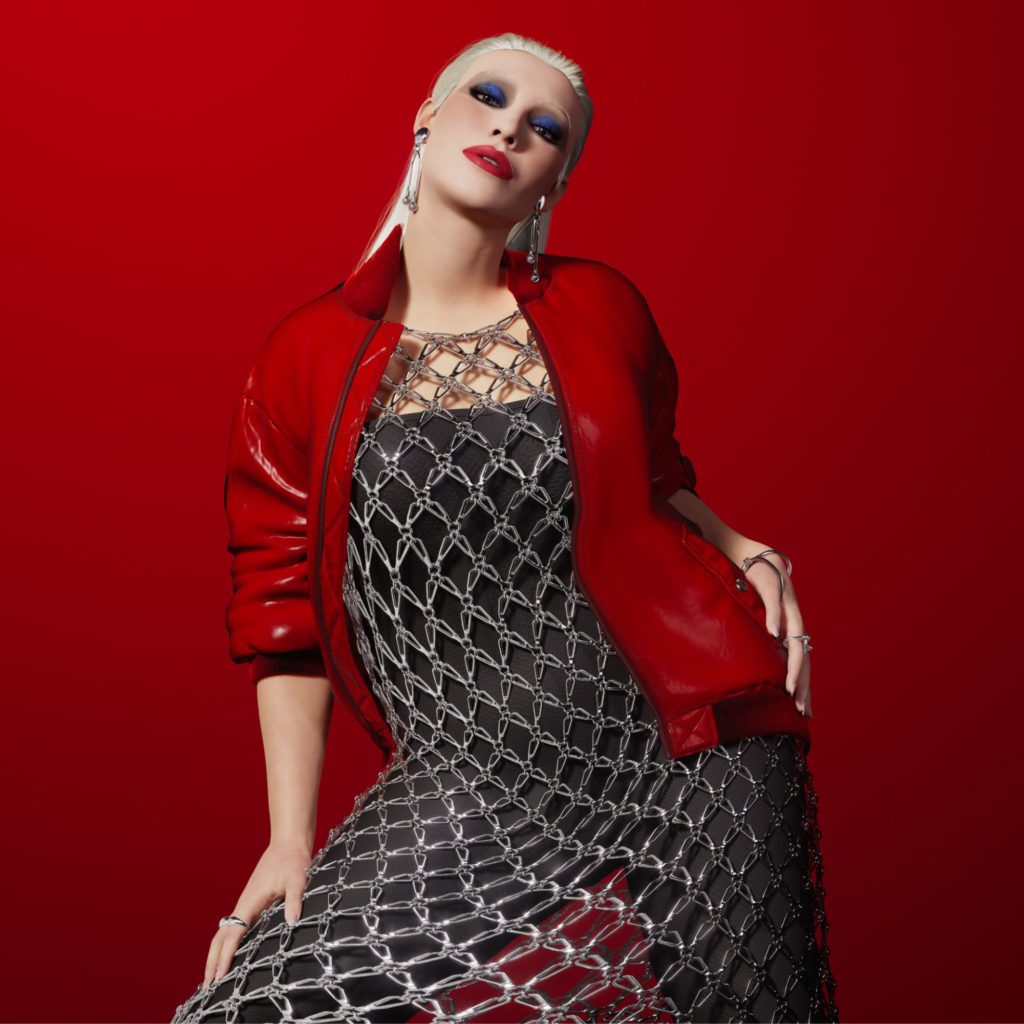
“The beautiful thing about Nars is that we have an incredibly diverse consumer base,” Fierro says.
Along with their Gen Z and millennial consumers who flock to the brand for its extensive shade range TikTok friendly colour palettes, Fierro notes that “there are women in their 40s and 50s who bought one of the brand’s original lipsticks 20-something years ago.”
Currently, Maxine and co. are young, because millennials and Gen Z are over-indexing in the metaverse and are most likely to need “guides” in the near term. But that doesn’t mean the Power Players need to stay young. Like Tavi Gevinson, they may age with their audience.
Should TikTokers Be Worried?
Just as they’ve shafted our Instagram besties, do TikTokers need to be watching their backs for virtual humans? Probably not.
Most experts agree that our receptivity to digi-humans is reflective of the fact that the boundaries between our physical worlds have been pre-eroded by social media, virtual dating, and remote workplaces. A report by Ipsos found that rather than preferencing the metaverse and Web3 environments, Gen Z didn’t truly distinguish between the two. They turned to meta environments for social connection, community, opportunities for self-expression, and a sense of stability in the same way humans have gravitated to social networks for centuries (yes, there were social networks pre-Instagram).
In the 2010s, having friends you’d never met IRL made you weird, but these days, it’s the norm for many. Many of us network virtually and work daily with people we’ve never met physically. We can hold conversations with a potential love interest on dating apps for weeks (despite the “not looking for a pen pal” protests of many profiles). In this context, it’s not weird that we’re as receptive to virtual tastemakers as we are to their human counterparts. While digital detoxes are constantly recommended, “logging off” can mean losing access to entire networks of people we only interact with online.
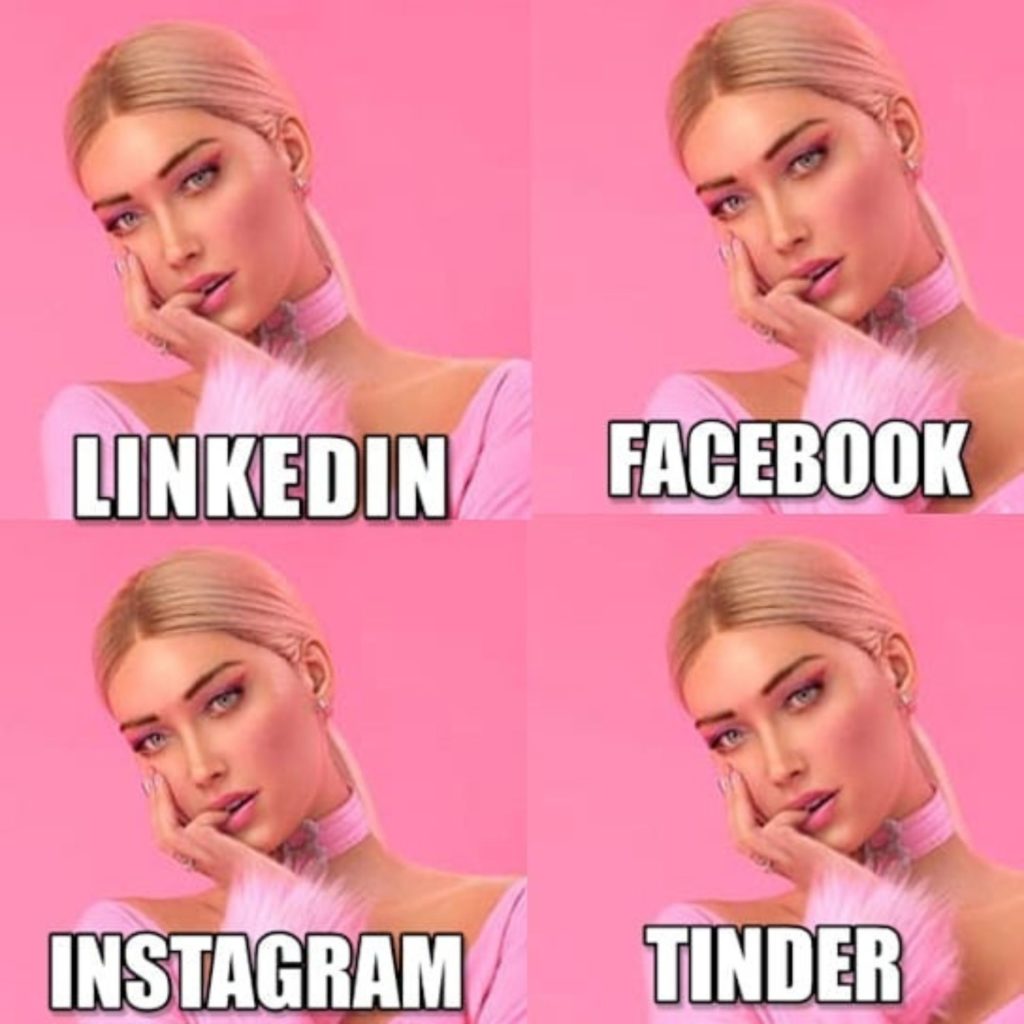
In this context, it makes sense that brands are betting virtual avatars and experiences will become companies like Soul Machine are (not uncontroversially) training up virtual AI avatars for roles in everything from customer service, to healthcare.
Maybe asking an avatar whether your blush is blended enough at the club won’t seem so strange in the future.


